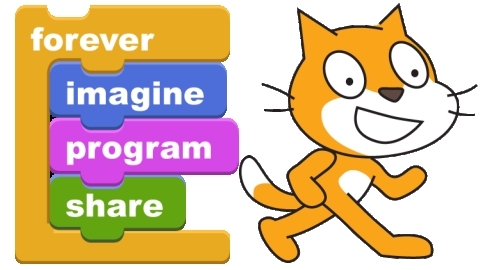In this article I want to explore having students use their computational thinking skills to code an app to assist them in making predictions about real-life events while exploring theoretical and experimental probabilities. It is assumed you have some knowledge of block coding (eg: Scratch).
Let us look at the expectations for grade 8 math (Data Management & Probability) here in Ontario:
Overall Expectations:
- use probability models to make predictions about real-life events;
Specific Expectations:
- compare, through investigation, the theoretical probability of an event (i.e., the ratio of the number of ways a favourable outcome can occur compared to the total number of possible outcomes) with experimental probability, and explain why they might differ;
- determine, through investigation, the tendency of experimental probability to approach theoretical probability as the number of trials in an experiment increases, using class-generated data and technology-based simulation models;
Traditionally, this lesson is taught by having students conduct their own experiments while making a tally in a T chart (eg: roll a die, flip a coin), We are going to extend it by adding the critical thinking layer by coding an app to run the simulation on our behalf. Doing this gives students the perfect opportunity to run their simulation a great deal of times to explore what actually happens to the experimental probability in terms of the theoretical the more often it runs.
To view the video tutorial, please see below – it is quite evident the risk-taking, critical thinking and problem solving through this process:
Not only do students grasp the numeracy concepts, they problem-solve the entire time – in a collaborative environment. See my post on computational thinking here. But let us also consider the inquiry. Inquiry looks a little different in the CS world as the questions generally become “if I change this variable, what will happen?”. It’s still very much inquiry.
Collaborative inquiry holds potential for deep and significant change in education. Bringing educators together in inquiry sustains attention to goals over time, fosters teachers’ learning and practice development, and results in gains for students.
http://www.edu.gov.on.ca/eng/literacynumeracy/inspire/research/CBS_CollaborativeInquiry.pdf
Not only does giving students an opportunity to code a simulation like this, it provides an opportunity to explore the 6 C’s. The 6 C’s are:
- Character education— honesty, self-regulation and responsibility,
perseverance, empathy for contributing to the safety and benefit of others,
self-confidence, personal health and well-being, career and life skills. - Citizenship — global knowledge, sensitivity to and respect for other cultures,
active involvement in addressing issues of human and environmental
sustainability. - Communication — communicate effectively orally, in writing and with
a variety of digital tools; listening skills. - Critical thinking and problem solving — think critically to design and manage
projects, solve problems, make effective decisions using a variety of digital
tools and resources. - Collaboration — work in teams, learn from and contribute to the learning of
others, social networking skills, empathy in working with diverse others. - Creativity and imagination — economic and social entrepreneurialism,
considering and pursuing novel ideas, and leadership for action.
The overall purpose of these six Cs and their underlying DNA is the well-being of
the whole student, and the well-being of society, which essentially consists of
higher levels of student achievement and the capacity to apply what one knows
http://www.michaelfullan.ca/media/13599974110.pdf
This task can easily be easily extended. A more challenging simulation might be a six sided die as there are more outcomes for the student to consider and code or a spinner with different sized options. Whatever the case, these models can certainly be used to predict real-life events. Don’t forget the real-life coin flipping scenarios in your class, just consider using this as an extension of that learning.
To view the working simulation from the video above, please see below:
I want you to consider that not only do you as an educator cover the above expectations, this provides an excellent opportunity for anecdotal notes and conversations based on the Learning Skills and Work Habits. If you would like an app to store such feedback, check out edmettle – www.edmettle.com.


 For all the kids who grow up in a small town and think they don’t stand a chance. You do. I was once that kid.
For all the kids who grow up in a small town and think they don’t stand a chance. You do. I was once that kid.